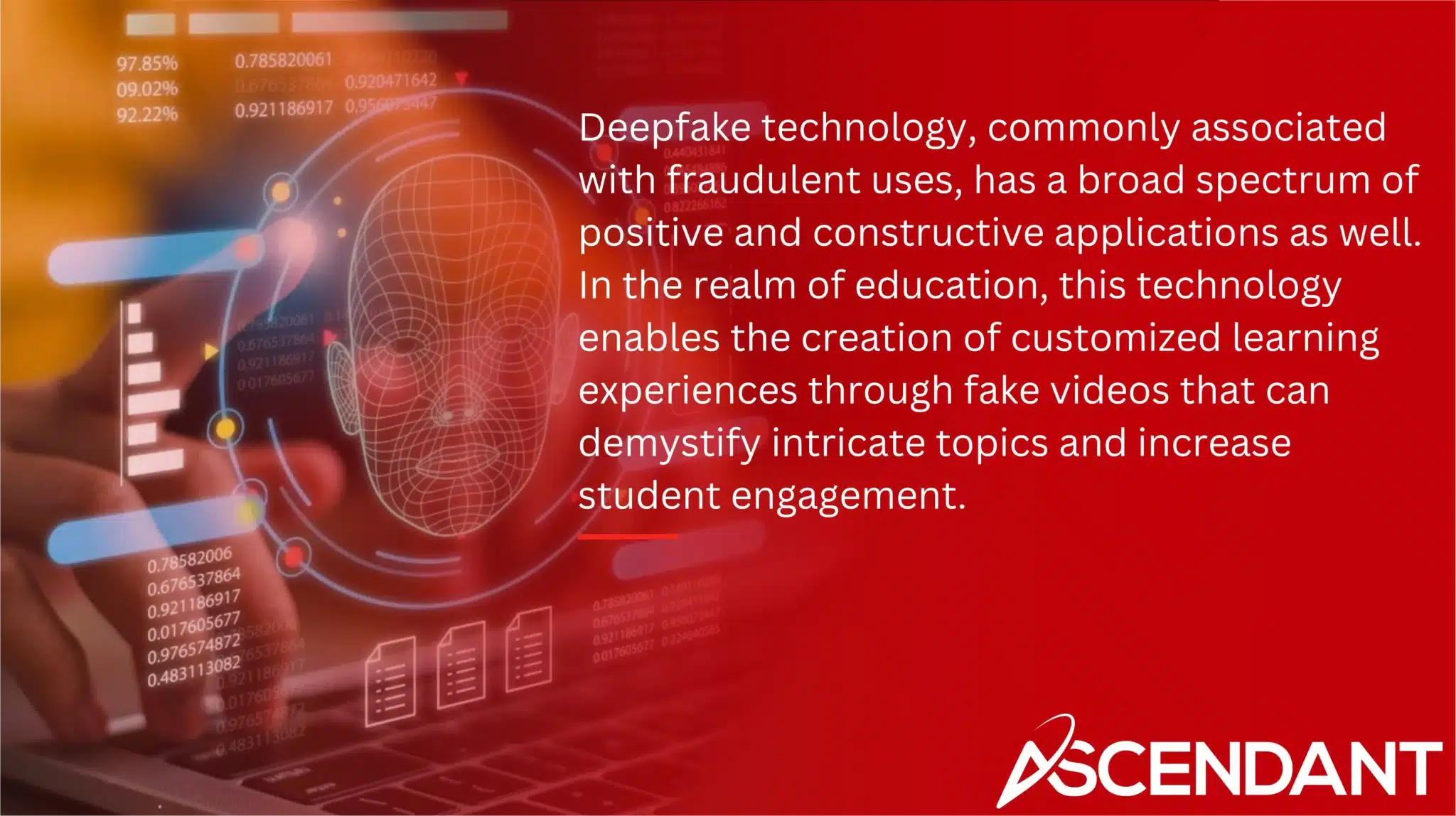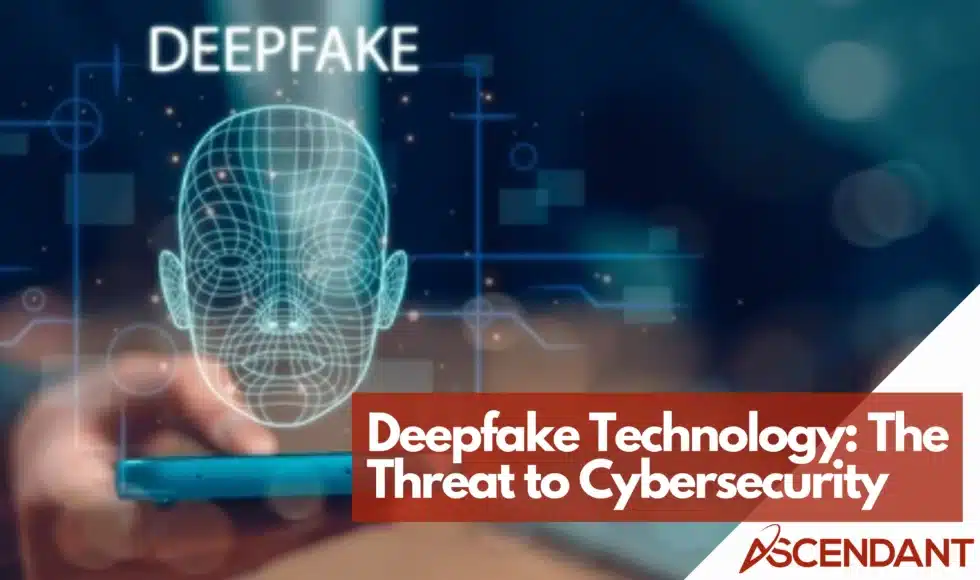Deepfakes use AI to create fake, yet realistic images, videos, or audio. While this technology has many uses, it also brings security and ethical challenges. This article will explain how deepfakes work, their pros and cons, and why deepfakes matter.
In This Article:
- Understanding Deepfake Technology
- How Deepfakes Are Created
- Common Applications of Deepfakes
- Ethical and Legal Implications
- Dangers and Risks of Deepfakes
- Methods for Detecting Deepfakes
- Strategies to Combat Deepfakes
- Notable Examples of Deepfakes
- Future of Deepfake Technology
Key Takeaways
- Deepfake technology employs advanced AI and deep learning to create highly realistic manipulated media, raising both opportunities and ethical concerns.
- Common applications of deepfakes span education, film, and advertising, but they also pose significant risks, such as misinformation and identity theft.
- Detecting deepfakes is challenging due to evolving algorithms; technological and legislative measures, including digital watermarks and blockchain, are essential to combat these risks.
Understanding Deepfake Technology
Deepfake videos, images, or audio are modified or created from scratch by sophisticated AI tools. These tools manipulate actual footage to fabricate scenes with real people in false situations or entirely fictional characters that appear remarkably true-to-life. Deepfake technology harnesses the power of artificial intelligence combined with deep learning to alter existing media significantly or craft new content that’s virtually indistinguishable from authentic material.
Central to the development of this cutting-edge technology is deep learning—a machine learning technique focused on utilizing multi-layered neural networks. By training these networks to mimic complex human behaviors like facial movements and speech idiosyncrasies, they become adept at producing high-quality deepfake content. Convolutional neural networks excel particularly in recognizing faces and tracking their movements—essential for crafting believable deepfake videos.
The creation of audio deepfakes heavily relies on natural language processing techniques which analyze and emulate specific vocal patterns so accurately that it becomes difficult to differentiate them from a genuine recording of the targeted speaker. Enhancements made possible through autoencoders based on neural networks contribute Realistic. They meticulously process details such as subtle expressions and tone variations during voice synthesis.
For those without extensive technical expertise, applications such as Deep Art Effects and Wav2Lip have simplified the process of creating persuasive fake visuals due largely in part because modern computing has adapted adequately enough to manage heavy data workloads necessary for developing advanced forms of this tech-phenomenon—progression greatly bolstered since improvements were seen across algorithms associated with mid-2010s era-deep-learning research efforts.
Integral elements within construction sequences involved produce fictitious video/image materials via generator mechanisms while discriminator counterparts strive towards distinguishing these mock-ups apart through scrutiny—in essence honing both forge & identification faculties amidst an antagonistic loop resulting subsequently more credible iterations over time.
How Deepfakes Are Created
At the heart of deepfake video creation lies a cutting-edge AI model known as the Generative Adversarial Network (GAN). This innovative technology generates and hones realistic fake content through an elaborate process, utilizing two interlinked neural networks—the generator and the discriminator—to produce convincing deepfakes.
The procedure for creating deepfakes requires original video clips to sophisticated AI methods. Platforms such as DeepfakesWeb permit users to provide both source and target videos, which are then used by the AI model to craft new personalized videos in the form of deepfake content. The authenticity of these resulting deepfakes is significantly affected by the quality and length of supplied source footage. With enhanced training data, this process yields more misleading outcomes as it improves with better input.
Thanks to intuitive tools available online, generating personalized videos via GANs has become remarkably straightforward. Such advancements have granted those without detailed technical expertise access to crafting high-fidelity fake creations easily.DeepfakesWeb exemplifies this ease by enabling individuals to simply upload their own clips for transformation into deceptive yet highly customized media works.
Leveraging cloud computing has expanded what’s achievable within varied aspects of producing authentic-seeming faked digital material. Offering robust computational resources required during refining stages ensures that speedy production remains attainable despite potential complexities involved in perfecting illusionary imageries using existing platforms like DeepfakesWeb.
Yet alongside innovating ways we create hyper-realistic imitation visuals, come serious implications—one being detecting made-up scenes from genuine ones continues to evolve rapidly too—as evidenced by endeavors akin to ‘the challenge’, driving forth research dedicated towards advancing our abilities at identifying artificial manipulations amidst visual truths perpetually stays essential. Maintaining equilibrium between newly-developed techniques aimed at curbing spread while keeping pace with ever-advancing practices instrumentalizing duplicitous capabilities inherent in current-day machine learning applications specially designed targeted constructing virtual facsimiles exceedingly tough discern against originals on spot increasingly challenging day-by-day race undoubtedly persists rife fervor throughout cyberspace all around us today.
Common Applications of Deepfakes

Deepfake technology, commonly associated with fraudulent uses, has a broad spectrum of positive and constructive applications as well. In the realm of education, this technology enables the creation of customized learning experiences through fake videos that can demystify intricate topics and increase student engagement.
Within cinematography, fakes have ushered in a new era for special effects by enabling filmmakers to produce realistic characters or resurrect historical personalities on screen. This same technique has been harnessed by political figures to broadcast their speeches in various languages effectively enlarging their audience reach.
An influx of fake content is prevalent across social media platforms today. These materials often take form as memes and popularly shared videos which foster user interaction but sometimes blur the distinction between humor and misinformation. The advertising sector leverages deepfakes to devise inventive campaigns delivering persuasive messages wrapped in captivating visuals.
Artistic communities are adopting techniques involved with producing fake videos using deepfake technology to push boundaries between traditional artistry and innovative digital creations. Yet it’s crucial not to overlook that such technologies carry risks—they could be utilized erroneously for spreading disinformation aimed at swaying public opinion or influencing societal views alongside political inclinations.
In entertainment like virtual concerts, another dimension unfolds where synthetic avatars made from this technology emulate real performers offering novel sensory encounters fortified with high-quality images enhancing visual delivery. As advances persist within this field, we anticipate an escalation both in potential benefits derived from its application along with emerging dilemmas it might pose.
Ethical and Legal Implications
The emergence of fake technology has profound ethical and legal consequences. Although creating deepfakes isn’t universally illegal, it can cross the line into illegality if it results in defamation or privacy breaches. The primary concern revolves around ethics, especially when considering nonconsensual pornography involving deepfakes that target public figures causing intense psychological harm.
Within the United States, there is a push to legislatively counteract the complications brought about by deepfake technology. As many as forty states are actively working on laws related to this issue with particular prohibitions on election-related deepfakes and those created for nonconsensual pornographic purposes without consent. These proposed regulations strive to find equilibrium between harnessing the advantages of such technologies while safeguarding individual rights and preserving societal trust.
Particularly in political contexts like elections, manipulated audiovisual content represents a grave risk to democratic integrity—a point underscored during incidents throughout the 2024 electoral period—which prompted serious scrutiny from both an ethical and legal standpoint. With continuous advancements in deepfake capabilities, it’s imperative for legislators to proactively address these changes so as not only protect but also ensure transparency within civic dialogue and debate processes.
Dangers and Risks of Deepfakes
Deepfakes pose numerous and far-reaching dangers and risks. One of the most concerning aspects is the potential for identity theft and fraudulent transactions. Cybercriminals can use fake technology to create fake identities, enabling financial fraud and other illegal activities. For instance, a CEO was tricked into transferring €220,000 based on a fake audio call, highlighting the financial risks posed by deepfakes.
Misinformation is another significant risk. Deepfake videos and audio can spread false information rapidly, even if the content is later debunked, leading to lasting damage to public trust. The evolution of deepfake technology means that detection methods must continuously adapt to keep up with increasingly sophisticated deepfakes.
Political figures are particularly vulnerable to fake technology. Manipulated audio can make it sound like they have said things they have not, increasing the risk of disinformation and influencing public opinion. Deepfake technology can also be used in social engineering, creating audio deepfakes that impersonate trusted individuals to deceive and manipulate people.
Cybercriminals can utilize fake technology to create scams, false claims, and hoaxes, further complicating the landscape of online security. A false deepfake video of a senior executive can cost time and money to disprove, damaging a company’s brand, public reputation, and share price.
Deepfake technology’s potential to spread false information and create chaos poses a major threat to society. As the technology continues to evolve, it will be essential to develop effective strategies to mitigate these risks and protect public trust.
Methods for Detecting Deepfakes
Detecting deepfakes is a challenging but essential task in the fight against manipulated media. Deepfakes are generated using two competing algorithms: one creates realistic fake images, and the other detects them. This adversarial process helps improve both the creation and detection of deepfakes, but current detection technologies often struggle in real-world conditions due to variations in lighting, facial expressions, and audio quality.
Digital watermarks can be embedded in media, revealing alterations and proving authenticity when fakes are created using the original content. Blockchain technology offers another promising solution by securing media and its metadata, making unauthorized changes evident and assisting in authenticity verification. These methods can be combined to enhance deepfake identification, offering a multi-layered detection approach.
Training detection models on diverse, current datasets is vital for adapting to new deepfake generation techniques. The rapid growth of deepfake and shallowfake content necessitates advanced detection technologies and updated legislation to combat misuse. As deepfake technology continues to evolve, so too must the methods used to detect and combat it.
Deepfake detection competitions drive advancements in developing precise detection tools and methodologies. These competitions encourage collaboration among researchers and developers, leading to more effective detection solutions.
Strategies to Combat Deepfakes
Tackling deepfakes necessitates an integrated approach that encompasses technological innovation, legal measures, and heightened awareness among the public. Technological advances such as digital watermarking and metadata insertion are being deployed to confirm the genuineness of content. Blockchain is being leveraged to generate immutable records for media verification purposes.
A concerted effort between those in technology development, legislators, and citizens is crucial when responding to deepfake predicaments. Initiatives like MeaConnexus aim at enhancing secure communications online by combating deepfake manipulations. By merging a variety of detection technologies with authentication strategies can considerably bolster our ability to pinpoint deepfakes—offering a powerful barrier against tampered media.
Competitive drives focusing on the refinement of techniques specific to detecting deepfakes spur progress in creating accurate identification tools. Such contests foster partnerships among scientific researchers and tech developers, resulting in more adept solutions for recognizing manipulated content effectively.
Notable Examples of Deepfakes
Examples of deepfake videos that have garnered significant attention include those featuring well-known political personalities, triggering concerns over their capacity to sway election outcomes. The appearance of such fakes during the 2020 United States elections underscored how deeply this technology can affect public opinion and interfere with democratic procedures.
It is crucial to educate the general public about the risks associated with deepfakes in order to mitigate their harmful effects. By gaining knowledge on how these technologies function, people can sharpen their ability to discern between authentic and doctored digital content, thus diminishing the impact of malevolent deepfakes.
Notorious instances where figures like former President Barack Obama and Facebook’s Mark Zuckerberg were depicted through sophisticated fakery illustrate both the potency and potential perils inherent in these technological advancements. These incidents stress why it is imperative for society to remain alert and prioritize education within today’s digitized landscape.
Future of Deepfake Technology
The trajectory of deepfake technology promises to obscure the distinction between authentic and altered content, escalating doubts about digital media among the public. As AI technology evolves, we face an upward trend in the creation of even more convincing deepfakes that will test our abilities to identify and confirm their authenticity.
This erosion of confidence in digital materials could ripple across various fields such as law enforcement, journalism, and social media platforms. The assurance of genuineness within digital arenas is poised to become paramount. Hence there will be a pressing need for ongoing improvements in technologies aimed at recognizing fakes and confirming veracity.
While fake technology opens up exhilarating avenues for creative expression and innovation, it simultaneously carries substantial hazards. Striking equilibrium between these prospects and safeguarding communal trust alongside security represents a formidable obstacle looming on the horizon.
Summary
Deepfake technology presents itself as a tool with both immense potential and significant dangers. It enables tailor-made educational content and inventive marketing campaigns, yet it also opens doors to deceptive practices and the threat of personal security breaches. Grasping the mechanisms behind deepfake creation, exploring their various uses, and identifying strategies for detection and prevention are vital steps in managing this intricate issue.
Looking ahead, it is imperative to strike an equilibrium between reaping the advantages that fake technology brings while safeguarding individual rights and preserving societal confidence. By remaining alert and well-informed, we can exploit deepfakes’ positive aspects while curtailing their harmful impacts to promote a digital era that is secure and reliable.
 Frequently Asked Questions
Frequently Asked Questions
What are deepfakes?
Images, videos, and audio that have been manipulated or created by AI to convincingly represent real or imaginary people are known as deepfakes.
The challenges this technology brings about in distinguishing actuality from counterfeit raise substantial ethical and security concerns.
How are deepfakes created?
Generative Adversarial Networks (GANs), which consist of two collaborating neural networks, are utilized to produce and refine highly realistic fake content.
Such sophisticated technology enables the production of extremely persuasive manipulated media.
What are some common applications of deepfakes?
Deepfakes are commonly used in education for personalized learning, in the film industry for visual effects, and in social media and advertising for creating engaging content.
Their diverse applications highlight both their potential benefits and ethical considerations.
What are the ethical and legal implications of deepfakes?
Deepfakes pose serious ethical issues, especially in relation to non-consensual activities and the spread of misinformation.
Legally, many jurisdictions are already moving towards enacting laws to combat their misuse.
How can deepfakes be detected?
Deepfakes can be detected using methods such as digital watermarks, blockchain technology, and sophisticated detection models trained on varied datasets.
Advancements in detection technologies are further enhanced through competitions and collaborative efforts.

